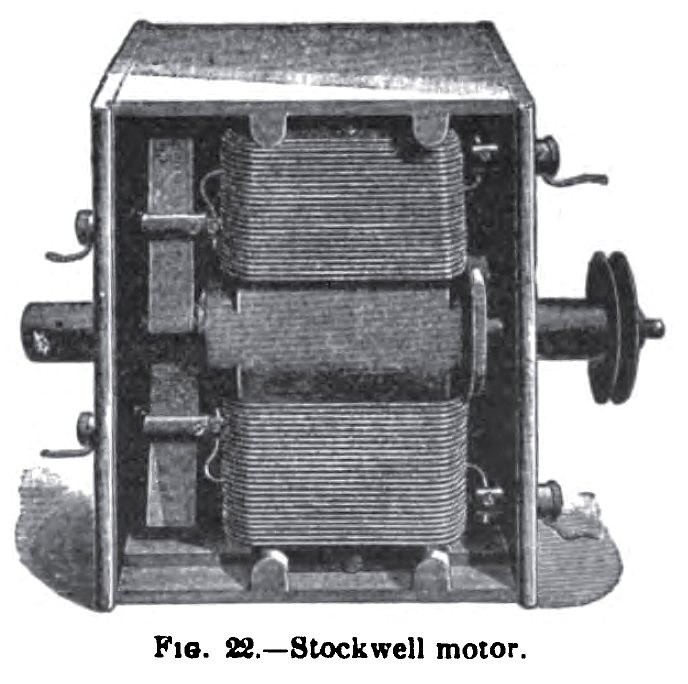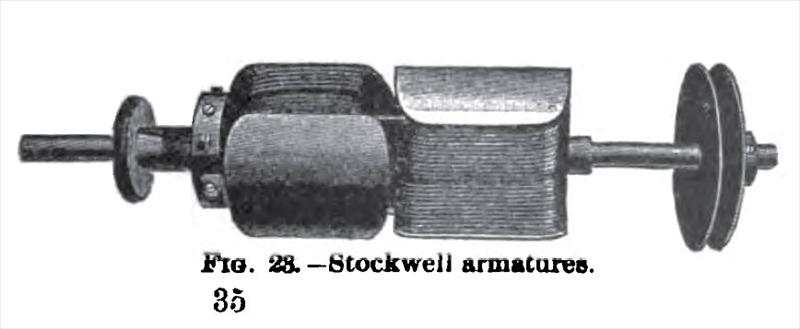|
Title: |
1895 Article-Electrical Development & Mfg. Co., Stockwell Electric Motor |
|
Source: |
Modern Mechanism 1895 pg 545 |
|
Insert Date: |
9/13/2011 9:50:46 PM |
|
The Stockwell motor, once largely used on arc-lighting circuits, is shown in Fig. 22. It is enclosed within a case, one end of which is removed so as to expose the interior. The magnets are of the converging, consequent-pole type, and form an integral part with the top and bottom of the casing. The two sides are cast separate and held together by screws. The armature, or, more correctly, the armatures, for there are two of them, are shown in Fig. 23. As will be seen, they are of the Siemens shuttle-wound type, and are placed at right angles to each other. The commutator has four segments, and the terminals of the wire on each armature are connected to opposite segments. The latter are not made parallel with the spindle, but are helical in shape, so that there is no break in the circuit at that point, since the brush passes the current to one armature before leaving the other. By this arrangement only one armature is in action at one time. Taking the one to the right, for example, it is at its maximum effect during the quarter revolution when the polar faces of the armature are approaching the pole pieces, and until they come directly opposite each other. During the next quarter revolution the armature is cut out of the circuit entirely; on the third quarter it again comes into the circuit until occupying the same relative position as in the first quarter; and, finally, in the fourth quarter it is again cut out. But it is evident that during each of these idle periods of the armature to the right, that to the left comes into circuit and goes through relatively the same cycle of operations. The action is quite analogous to that in two steam engines coupled with their cranks at right angles to each other. While one is passing over the center, and practically doing no effective work, the other is in the position of maximum power, with the crank at right angles at the line of stroke. In both cases there can be no dead point, and the motion is smooth and continuous. |
|
 1895 Electrical Development & Mfg. Co., Stockwell Electric Motor
1895 Electrical Development & Mfg. Co., Stockwell Electric Motor
 1895 Electrical Development & Mfg. Co., Stockwell Electric Motor Armature
1895 Electrical Development & Mfg. Co., Stockwell Electric Motor Armature
|
|